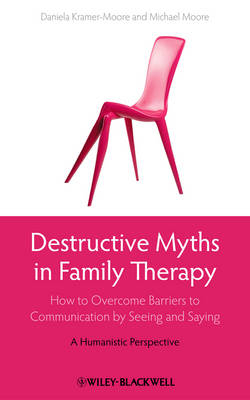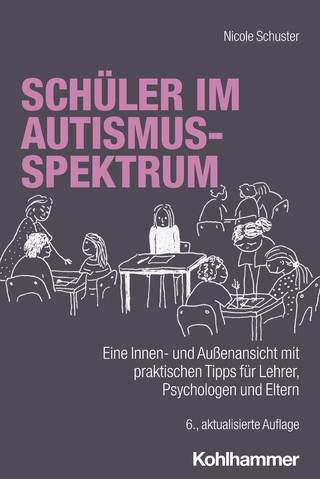
Destructive Myths in Family Therapy
Wiley-Blackwell (Verlag)
978-0-470-66701-9 (ISBN)
- Titel z.Zt. nicht lieferbar
- Versandkostenfrei innerhalb Deutschlands
- Auch auf Rechnung
- Verfügbarkeit in der Filiale vor Ort prüfen
- Artikel merken
Exposes destructive patterns of communication within family cultures and provides strategies for promoting more open dialogue among family members.
Equips family therapists to help clients see the barriers they place in the way of healthy communication, and adopt more constructive alternatives
Provides activities designed to spark open dialogue between therapist and clients, strengthening the therapeutic relationship and facilitating family interaction
Includes communication strategies for reversing disengagement, defusing power struggles, overcoming sibling rivalry, disentangling marital problems and more
Offers a new understanding of family dynamics, an area in which many family therapists want to improve their skills but have struggled to find a text to guide them in doing so
Daniela Kramer-Moore is currently a Visiting Lecturer in the Department of Psychology, University of Warwick. A family therapist with many years' experience of working with high risk adolescents and their families, she now heads the post-graduate Psychotherapy Centre at Oranim Academic College, Kiryat Tiv'on, Israel, where she previously led the Masters program in Educational Counselling. Michael Moore is currently a Visiting Lecturer in the Department of Psychology, University of Warwick. He is a social psychologist with many scholarly publications in the field, and was until recently Head of the Department of Education in Technology and Science at Technion - Israel Institute of Technology, Haifa, Israel.
Preface xiii Acknowledgments xvii
Part I Seeing – The Choices weMake 1
1. Blindness, orWith EyesWide Shut 5
Dangers, Taboos, and Punishments 8
Identified Patients 9
A Continuum of Blindness 10
Total blindness 11
Tunnel vision 11
Partial vision 12
Broad vistas 12
Clear vision 12
Surprise, Surprise! 13
The Irreversibility of Seeing 14
Activities 15
1 Pin the tail 15
2 Blind walk 15
3 Blind spots 16
4 Train ride 16
5 Picture gallery 17
6 To see ourselves as others see us 17
2. Distortions, or It’s All for the Best! 18
A Few Ego Defense Mechanisms 20
Family Defense Mechanisms 21
Activities 30
1 Family map 1 30
2 Family map 2 31
3 Family gossip 31
4What do the neighbors think about us? 32
5 Masquerade 32
3. Insight through Therapy, or To See or Not To See 33
The Goals of Therapy 35
Stages of Therapy 37
Stage 1: Insightful recognition of PFPs 37
Stage 2: The implementation of change 40
Stage 3: Evaluation and conclusion 47
Activities 49
1 Family pain mapping 49
2 Genogram 49
3 Roles 50
4 A sack of stones 50
5 Conflict orWhat is this quarrel about? 51
6Windows 51
4. Making TherapyWork, or PracticeWhat You Preach 52
The Therapist as Client 53
Neutrality, Empathy, Authenticity, and Creativity 54
The Therapeutic Agreement 58
Types of Clients 61
Stopping and Reflecting 62
Implementing Change 63
Individual vs. Family Therapy 64
A FewWords on Group Psychotherapy 65
About the Activities 66
Multicultural Perspective 67
Activities 70
1 Agreement 70
2 Listen! 70
3 Good cop, bad cop 71
4 The four Fs 71
5 Empathy training 71
Part II Saying – The Power ofWords 73
5. Homeostatic Messages, or Don’t Rock the Boat! 77
Let’s not talk about it 82
Everyone has problems! 85
Count your blessings 86
Better the devil you know 88
Activities 90
1 A word to the wise 90
2 Action blockers 91
3 Time travel 91
4 A note to myself 92
5 Script writing 92
6. Lack of Authenticity, or Keep a Stiff Upper Lip 94
Four Conceptions of Authenticity 95
Authenticity as a Trait 100
Pseudo Living 101
And They LivedHappily Ever After 102
C’mon, Give Daddy a Smile! 103
Play Hard to Get 105
What Will the Neighbors Say? 106
Forgive and Forget! 107
Activities 108
1 A word to the wise 108
2 Hidden Agenda 1 108
3 Hidden Agenda 2 109
4 Objects 109
5 Dinner time 110
6 Packages 110
7. Inequality, orWhat Can You Expect From a Man? 111
The Status of Children 113
Spousal Equality 115
It’s for your own good! 116
Honor your father 119
I’m glad we had this little talk 120
It’s not the same thing 121
I told you so 122
Activities 123
1 A word to the wise 123
2 Line up 123
3 A piece of cake 123
4 Favoritism 124
5 Respect me! 124
6 Same or different? 125
8. Belittling, orWho Do You Think You Are? 126
Types of Belittling 128
Targets and Consequences 129
You are too young to understand 135
You’re just like your father/mother! 136
But at least you’ve got nice eyes 137
It’s all your fault 138
You’re oversensitive 138
Activities 140
1 A word to the wise 140
2 Little people 140
3 Pick a card 140
4 Family sculpture 141
5 Ruler 141
9. Bookkeeping, or Just YouWait 142
Individualism vs. Collectivism 144
Bookkeeping in the Family 145
You owe me! 146
I’ll never forgive you 147
But you yourself have said so! 149
It serves you right! 150
This is the last time I’m taking you on an outing! 151
Activities 153
1 A word to the wise 153
2 The black book 153
3 Rooms 153
4 Family secrets 154
5 Shopping list 154
10. Family Rivalry, or Divide and Conquer 155
Sibling Rivalry 159
Parental Rivalry 159
Let him have it! 160
OK –Who started it? 161
Why can’t you be more like your sister? 162
Who loves Mommy best? 164
Activities 166
1 A word to the wise 166
2 Once upon a time 166
3 Family scripts 166
4 It figures 167
5 Family garden 167
11. In Lieu of Conclusion: Myths in the Service of Psychopathology 169
Activities 173
1 A letter to myself 173
2 Family sculpture 173
3 I andWe 173
4 Temperature taking 174
5 The road taken 174
6 Closure 175
References 177
Index 191
| Verlagsort | Hoboken |
|---|---|
| Sprache | englisch |
| Maße | 158 x 236 mm |
| Gewicht | 408 g |
| Themenwelt | Geisteswissenschaften ► Psychologie ► Familien- / Systemische Therapie |
| Geisteswissenschaften ► Psychologie ► Klinische Psychologie | |
| ISBN-10 | 0-470-66701-X / 047066701X |
| ISBN-13 | 978-0-470-66701-9 / 9780470667019 |
| Zustand | Neuware |
| Haben Sie eine Frage zum Produkt? |
aus dem Bereich


